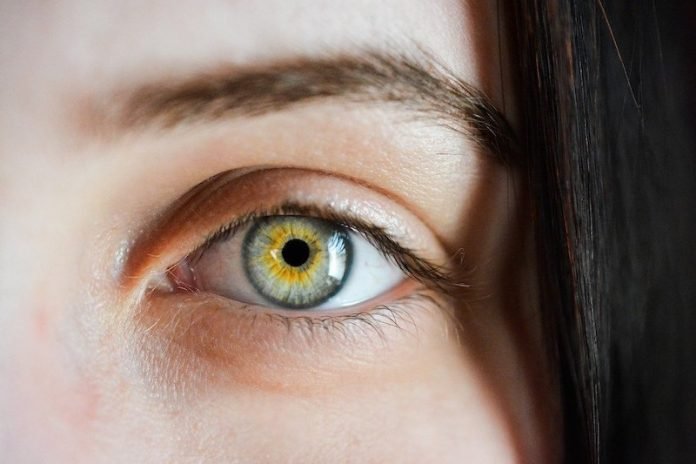
Diabetic retinopathy affects nearly 8 million Americans, and that number is expected to double by 2050.
But knowing the risks and symptoms and seeking an early diagnosis and treatment from a retina specialist can preserve sight and virtually eliminate vision loss from the condition, according to the American Society of Retina Specialists (ASRS).
Diabetic retinopathy is a complication of diabetes that causes damage to the blood vessels of the retina, often resulting in vision loss and preventable blindness.
The condition occurs in more than half of people diagnosed with diabetes.
“With new technologies that aid in early diagnosis and breakthroughs in treatment, we’ve entered a new era in which no one with diabetes need suffer the devastating effects of diabetic retinopathy,” said ASRS President Philip J. Ferrone, MD, FASRS.
“With more awareness about the condition, including the common risk factors and symptoms to watch for, everyone with diabetes can be armed with the information they need to preserve their sight.”
A retina specialist helped professional musician Glen Washington return to the stage after he experienced symptoms of diabetic retinopathy, including blurred vision, which affected his ability to read and drive.
Managing his diabetes while maintaining a hectic musician’s touring schedule wasn’t easy, unfortunately leading to damage to his retinas and vision loss.
Thankfully, Glen found a retina specialist near his home and learned his condition could be treated and his vision improved with laser treatments and intravitreal injections, also known as eye injections.
With ongoing treatment, Glen is back to performing, driving and can read even the smallest text, which has helped him regain his independence.
During November’s Diabetic Eye Disease Awareness Month, America’s retina specialists are sharing answers to 5 common questions about diabetic retinopathy to increase awareness of the condition and steps the public can take to safeguard their vision.
- Who is at risk for diabetic retinopathy?
Anyone who has diabetes—including Type 1, Type 2, and gestational diabetes—is at risk of developing diabetic retinopathy. Additional factors that can increase the risk include:
- Disease duration: the longer you have diabetes, the greater the risk of developing diabetic retinopathy
- Poor control of blood sugar levels over time
- Hypertension (high blood pressure)
- Kidney disease
- High cholesterol levels
- Pregnancy
- What are the symptoms of diabetic retinopathy?
Many people have diabetic retinopathy for a long time without symptoms. By the time symptoms appear, substantial damage may have occurred. Symptoms may include:
- Blurred or distorted vision
- Difficulty reading
- The appearance of spots—commonly called “floaters”—in your vision
- A shadow across the field of vision
- Eye pressure
- Difficulty with color perception
If you experience any of these symptoms, see a retina specialist as soon as possible.
- How is diabetic retinopathy diagnosed?
The best way to diagnose diabetic retinopathy is a dilated retina exam. During this exam, the physician places drops in the eyes to make the pupils dilate (open widely) to allow a better view of the inside of the eye, especially the retinal tissue.
The physician will look for:
- Swelling in the retina that threatens vision (diabetic macular edema)
- Evidence of poor retina blood vessel circulation (retinal ischemia)
- Abnormal blood vessels that may predict an increased risk of developing new blood vessels
- New blood vessels or scar tissue on the surface of the retina (proliferative diabetic retinopathy)
- How is diabetic retinopathy treated?
There are many approved treatments for diabetic retinopathy, including intravitreal injections, laser treatments and surgery. These procedures can be done in an office or hospital setting to prevent, treat or reverse damage from diabetes in the retina.
- Can diabetic retinopathy be prevented?
Retina specialists encourage those at risk for diabetic retinopathy to actively manage their health and protect their vision by:
- Controlling blood sugar, blood pressure and cholesterol
- Maintaining a healthy weight
- Taking any prescribed diabetes medications
- Getting regular dilated retina exams
- Quitting smoking
- Staying active
“From focusing on healthy lifestyle habits to making regular dilated retina exams a priority, there are many ways people with diabetes can maintain excellent vision for life,” said Dr. Ferrone.
“If symptoms of diabetic retinopathy do appear, seek out and partner with a retina specialist immediately for specialized care to help minimize the effects and possibly reverse retinal damage from diabetes.”
If you care about diabetes, please read studies about diabetes linked to higher death risk caused by infection and findings of more than 50% of people with type 2 diabetes die from heart disease.
For more information about diabetes and your health, please see recent studies about a new way to early detect diabetes-related blindness and results showing that some diabetes drugs may reduce the risk of Alzheimer’s disease.
Source: American Society of Retina Specialists (ASRS)



